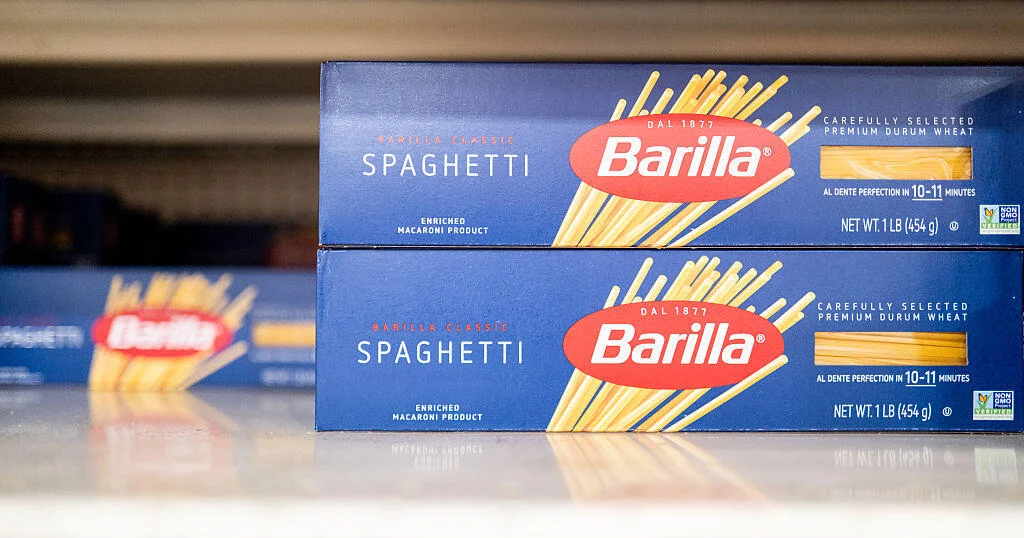The potential introduction of high import duties on Italian pasta could significantly affect American consumers, who may face higher prices or a shortage of popular brands. This move by the Commerce Department, catalyzed by findings from an ongoing investigation, could impose a staggering total duty of 107% on certain Italian pasta imports. As major Italian producers contemplate withdrawing from the U.S. market, analysts warn of an impending crisis in pasta availability across American grocery stores.
| Article Subheadings |
|---|
| 1) Overview of Proposed Import Duties |
| 2) Impact on American Consumers |
| 3) Key Players in the Pasta Industry |
| 4) The Regulatory Process and Next Steps |
| 5) Economic Implications for Pasta Exporters |
Overview of Proposed Import Duties
The U.S. Department of Commerce has published a proposal to impose a 92% antidumping duty on various Italian pasta brands, including prominent producers like La Molisana and Pastificio Lucio Garofalo. This follows a government probe revealing that these companies allegedly sold products below U.S. market prices. If implemented, these duties would be added to the 15% tariff already in place for European Union imports, bringing the total to an unprecedented 107%. Such a steep increase reflects one of the highest import duty rates the current administration has ever considered for any product.
Impact on American Consumers
Industry experts, including food analyst Phil Lempert, anticipate that if these duties go into effect, American consumers could face significant repercussions. The potential outcomes include the withdrawal of Italian pasta brands from U.S. stores and increased prices for the remaining products on shelves.
“You don’t have enough domestic manufacturing to fill up those shelves,”
said Lempert, emphasizing the expected gap in pasta availability in grocery stores. The consequences for consumers may range from inconvenience to increased costs, as families may have to budget more for staple foods that could see sharp price increases.
Key Players in the Pasta Industry
The proposed duties would affect 13 major Italian pasta manufacturers. These include recognizable names such as Agritalia, Barilla, and Rummo, as well as less familiar brands like Pastificio Chiavenna and Pastificio Sgambaro. Despite the scrutiny, the affected companies have remained largely silent regarding the proposal and its implications. Their absence from public discourse shows a possible hesitancy to engage with U.S. authorities or to address the concerns raised by the investigation.
The Regulatory Process and Next Steps
According to comments from White House spokesperson Kush Desai, this proposal is in its preliminary stages and requires further review. Desai noted that the pasta makers still have additional months to provide input before the decision is finalized. Thus far, the regulation process has been lengthy, dating back to a probe initiated in the mid-1990s concerning pricing practices. However, there remains no defined timeline for when these duties might take effect, as the Commerce Department and International Trade Administration have yet to respond to specific inquiries.
Economic Implications for Pasta Exporters
The proposal comes amidst a backdrop of rising tensions between American and Italian producers. Long-standing allegations from American pasta makers of unfair pricing practices by their Italian counterparts have inflamed the situation. Should the new duties be enacted, they could threaten the viability of Italian pasta exports, which last year reached a value of $684 million. This significant revenue stream underscores the importance of U.S. markets for these Italian companies. Many Italian pasta producers are reportedly considering withdrawal from the U.S. market to avoid the economic fallout associated with these duties.
| No. | Key Points |
|---|---|
| 1 | Proposed 92% antidumping duty could significantly raise prices on Italian pasta. |
| 2 | Total duties on Italian pasta could surpass 107% with existing tariffs. |
| 3 | American consumers may face shortages or increased prices for pasta products. |
| 4 | Thirteen Italian brands are directly impacted by the proposed duties. |
| 5 | Import duties may significantly threaten the U.S. market for Italian pasta. |
Summary
The proposed antidumping duties on Italian pasta represent a crucial juncture in U.S. trade relations and could have far-reaching consequences for consumers and producers alike. As Italian pasta manufacturers evaluate their options in the face of potential economic loss, American consumers may find themselves confronting empty shelves or inflationary pressures should the duties take effect. This situation serves as an important reminder of the interconnectedness of global markets and the potential implications of regulatory actions.
Frequently Asked Questions
Question: What are antidumping duties?
Antidumping duties are tariffs imposed on foreign imports believed to be priced below their market value. This pricing practice can unfairly undermine domestic industries.
Question: How might this duty affect pasta prices?
If the antidumping duty is implemented, it could lead to dramatic price increases for Italian pasta, as manufacturers may offset their costs by raising retail prices or stopping exports altogether.
Question: Are there alternatives for consumers if Italian pasta becomes scarce?
Yes, consumers may turn to domestic pasta manufacturers or explore alternative brands from other countries, but the overall availability of similar quality products may vary.


